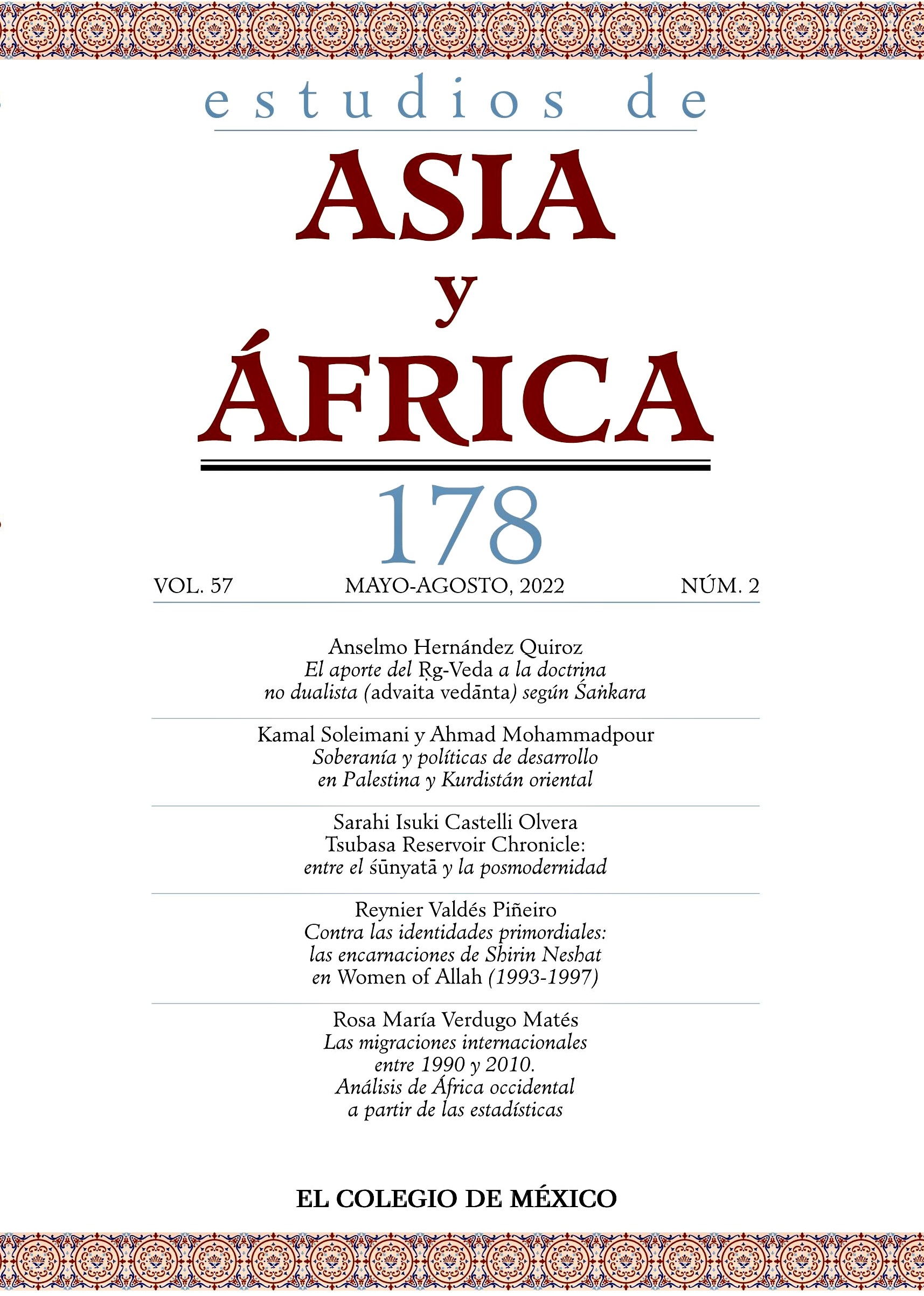Abstract
This article argues that the Tsubasa: Reservoir Chronicle manga, by CLAMP collective and published in Japan from 2003 to 2009, has a narrative structure based on a dialogue where religious philosophy converges with postmodern ideas. This argument is in contrast to the proposals of traditionalist discourse, which emphasizes the distinctive features of the Japanese tradition, thus tending to overlook the historical impact of the foreign Other. The analysis is based on the paradigm of indicial inferences of microhistory, with the identification of significant details. Postmodernism provides the theoretical reference points in two ways: one Eastern and the other Western, as suggested by Steven Heine, Fredrick Jameson, and Jean Baudrillard.
References
Álvarez Gandolfi, Federico. 2015. “Culturas fan y cultura masiva. Prácticas e identidades juveniles de otakus y gamers”. La Trama de la Comunicación 19: 45-65. https://doi.org/10.35305/lt.v19i0.514
Azuma, Hiroki. 2008. Génération Otaku : les enfants de la postmodernité. París: Hachette littératures.
Azuma, Hiroki. 2009. Otaku. Japan’s Database Animals. Traducido por Jonathan E. Abel y Shion Kono. Mineápolis, MN: University of Minessota Press.
Baudrillard, Jean. 1978. Cultura y simulacro. Traducido por Pedro Rovira. Barcelona: Kairós.
Beristáin, Helena. 1995. Diccionario de poética y retórica. México: Porrúa.
Bouissou, Jean-Marie. 2014. Manga : historie et univers de la bande dessinée japonaise. Arles: Philippe Picquier.
Camacho Morfín, Sol. 2009. “La pintura china estilo shuimo en mi lenguaje plástico”. Tesis de maestría, Universidad Nacional Autónoma de México. https://ru.dgb.unam.mx/handle/DGB_UNAM/TES01000639784
Castelli Olvera, Sarahi Isuki. 2017. “La noción del espacio en el manga Ekkusu (X): entre lo tradicional y la posmodernidad”. Espacialidades 7 (2): 164-186. http://espacialidades.cua.uam.mx/vol07/2017/02/08_Castelli.php
Castelli Olvera, Sarahi Isuki. 2018. “Referentes iconográficos de X, un manga posmoderno: entre el apocalipsis y el yin-yang”. Estudios de Asia y África 53 (3): 717-740. https://doi.org/10.24201/eaa.v53i3.2234
Castelli Olvera, Sarahi Isuki. 2019. “Intersticios de la posmodernidad en el manga mexicano Drem”. RICSH Revista Iberoamericana de las Ciencias Sociales y Humanísticas 8 (16): 55- 84. https://doi.org/10.23913/ricsh.v8i16.175
Chibi Yuuto’s Cronicles. 2016. “CLAMP Interview”. Traducida por Panicle. [Publicada originalmente en japonés en Tsubasa Caractere Chronicle]. https://chibiyuuto.com/clamp-interviews/clamp-interview-tsubasa-caractere-chronicle-december2016/
CLAMP. 2018. Tsubasa: Reservoir Chronicle. Vol. 1, Te protegeré porque te amo. México: Kamite.
CLAMP. n.d. (a). Tsubasa: Reservoir Chronicle. Vol. 22. http://animextremist.com/mangas-online/tsubasa-chronicle/capitulo-175/tsubasachronicle.html
CLAMP. n.d. (b). Tsubasa: Reservoir Chronicle. Vol. 26. http://animextremist.com/mangas-online/tsubasa-chronicle/capitulo-201/tsubasachronicle.html
CLAMP. n.d. (c). Tsubasa: Resevoir Chronicle. Vol. 27. http://animextremist.com/mangas-online/tsubasa-chronicle/capitulo-213/tsubasachronicle.html
Eliade, Mircea. 1999. Historia de las creencias y las ideas religiosas. Vol. 2, De Gautama Buda al triunfo del cristianismo. Buenos Aires: Paidós.
Foster, Michael Dylan. 2016. “The Folkloresque Circle: Toward a Theory of Fuzzy Allusion”. En The Folkloresque: Reframing Folklore in a Popular Culture World, editado por Michael Dylan Foster y Jeffey A. Tolbert, 47-75. Logan: Utah State University Press.
Frühauf, Tina. 2009. “Raqs Gothique: Decolonizing Belly Dance”. The Drama Review 53 (3):117-138. https://doi.org/10.1162/dram.2009.53.3.117
Ginzburg, Carlo. 1999. Mitos, emblemas, indicios: morfología e historia. Traducido por Carlos Catroppi. Barcelona: Gedisa.
Heine, Steven. 1995. “Ie-Ism (‘Sacred Familism’) and the Discourse of Postmodernism in Relation to Nativism/Nationalism/Nihonism”. En Japan in Traditional and Postmodern Perspectives, editado por CharlesWei-HSun Fu y Steven Heine, 25-53. Albany: State University of New York Press.
Heisig, James W., Thomas P. Kasulis, John C. Maraldo y Raquel Bouso García, eds. 2016. La filosofía japonesa en sus textos. Barcelona: Herder.
Isozaki, Arata. 2012. “Ma: Space and Time in Japan 1978/2009”. En From Postwar to Postmodern. Art in Japan 1945-1989, editado por Doryun Chong, Michio Hayashi, Fumihiko Sumitomo y Kenji Kajiya, 345-351. Nueva York: Museum of Modern Art.
Jameson, Fredric. 1991. Ensayos sobre el posmodernismo. Buenos Aires: Imago Mundi.
Jameson, Fredric. 1995. La estética geopolítica: cine y espacio en el sistema mundial. Barcelona: Paidós.
Jameson, Fredric. 1998. El giro cultural: escritos seleccionados sobre el posmodernismo 1983-1998. Buenos Aires: Manantial.
Jameson, Fredric. 2005. “La lógica cultural del capitalismo tardío”. Traducido por Celia Montolío Nicholson y Ramón del Castillo. http://sgpwe.izt.uam.mx/files/users/uami/nivon/JAMESON_logica_cultural.pdf
Kukkonen, Karin. 2010. “Navigating Infinite Earths: Readers, Mental Models, and the Multiverse of Superhero Comics”. StoryWorlds. A Journal of Narrative Studies 2 (1): 39-58. https://doi.org/10.1353/stw.0.0009
Menkes, Dominique. 2012. “La cultura juvenil otaku: expresión de la posmodernidad”. Revista Latinoamericana de Ciencias Sociales, Niñez y Juventud 10 (1): 51-62.
Nishitani, Keiji. 2003. La religión y la nada. Madrid: Siruela.
Pike, Edgar Royston. 2005. Diccionario de religiones. México: Fondo de Cultura Económica.
Pilgrim, Richard B. 1986. “Intervals (Ma) in Space and Time: Foundations for a Religio-Aesthetic Paradigm in Japan”. History of Religions 25 (3): 255-277. https://doi.org/10.1086/463043
Poloniato, Alicia A. 2008. “Percepción (posmoderna) y el ‘hacer sentido en el anime’”. Anuario de Investigación 2008: 680-702. https://publicaciones.xoc.uam.mx/Recurso.php
Robles Bastida, Nazario. 2011. “Sexualidad 2D: política, imaginación y libido dentro de una subcultura posmoderna”. Razón y Palabra, núm. 77. http://www.razonypalabra.org.mx/N/N77-2/08_Robles_M77-2.pdf
Santiago Iglesias, José Andrés. 2010. Manga: del cuadro flotante a la viñeta japonesa. Vigo: Universidad de Vigo.
Sugiyama Lebra, Takie. 1994. “Migawari: The Cultural Idiom of Self-Other Exchange in Japan”. En Self as Person in Asian Theory and Practice, editado por Robert T. Ames, Wimal Dissanayake y Thomas P. Kasulis, 107-124. Albany: State University of New York Press.
Tanaka, Michiko. 2011. Historia mínima de Japón. México: El Colegio de México.
Vilches Fuentes, Genaro. 2014. Breve historia del cómic. Madrid: Nowtilus.
Waldenfels, Hans. 1980. Absolute Nothingness Foundations for a Buddhist-Christian Dialogue. Nueva York: Paulist Press.
Watts, Alan. 1976. El camino del Tao. Barcelona: Kairos.
This work is licensed under a Creative Commons Attribution-NonCommercial-NoDerivatives 4.0 International License
Copyright 2022 Estudios de Asia y África



